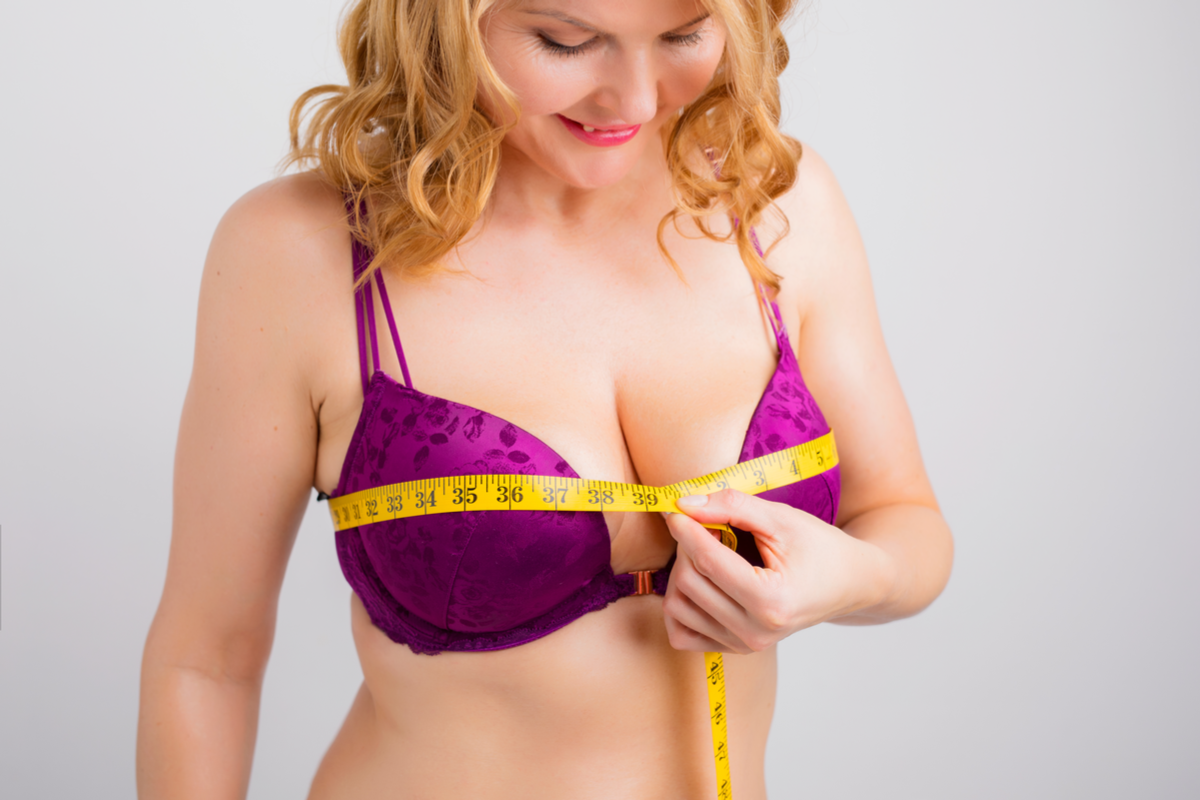![]()
According to Cancer Research UK, there are 46,000 new cases of breast cancer in the UK every year - this means that one in seven women just in the UK alone will develop breast cancer in their lifetime. If diagnosed straight away, most will survive the illness. However, if discovered in its latest stage, only 15% of these women have a chance of beating cancer. Therefore, a breast exam is essential to detect cancer as soon as possible.
While the thought of examining your breasts is scary, it’s essential to check your breasts as this will increase your chances of fighting, and beating, cancer. So, don’t panic, here’s our guide for a breast self-examination and what you should do should the worst happen.
Related: How to Boost Body Confidence in Time for Summer
What are the 8 warning signs of breast cancer?
When doing a self-breast exam, it’s important to know what to look out for. The main things to notice are any breast lumps or changes from the last time you checked. This could include:
1. A change in size, shape or outline of the breast.
2. A change in the look or feel of the breast; such as puckering or dimpling.
3. Rash or redness around the general breast or nipple.
4. A lump, swelling , thickened or bumpy area in the breast or armpit that is new.
5. Nipple discharge.
6. Discomfort in or around one breast that is new to you (however this is a rare symptom).
See more: How should I check my breasts? - NHS (www.nhs.uk)
Symptoms such as redness or discharge can be detected quite easily in front of a mirror, however, finding a lump is a little more difficult and this is where early detection plays an important part.
![]()
How do you do a self-breast exam?
1. Start by examining your breasts in the mirror. You need to straighten your shoulders and place your hands on your hips. Here you can notice any redness, swelling, inverted or retracted nipples, or changes to the skin texture.
2. Raise your arms and look for the same symptoms. This helps lift the breasts and shows you different angles. If you do see any of the visible signs of cancer, let your GP know.
3. Start to feel your breasts by lying down, using alternate hands for each breast. For example, your right hand should be used to check your left breast.
4. With your fingers together, press firmly on your breasts using your middle three fingers. When pressing, use a circular motion to detect for any lumps.
5. Ensure you cover your whole breast from every side, including the top of your collarbone, your nipple and your armpit, up until your abdomen. Varying pressure will allow you to notice lumps at various depths, for example a light pressure will alert you of any lumps near the surface, while a firm pressure checks your deep tissue.
6. Repeat this breast exam while standing up, as this may show you things you wouldn’t have otherwise noticed. To save yourself time, it’s convenient to do this while in the shower.
If you’re still struggling, this breast exam video may be able to help you.
What does a lump in your breast feel like?
The difficult thing when checking breasts for lumps is knowing which lumps are cause for concern, instead of just fatty breast tissue. While each bump can vary greatly by size and how hard it is, the general things to look out for according to Medical News Today include:
- New lumps that are not in the same area on your other breast or armpit
- Hard, immobile lumps
- Unevenly shaped lumps
However, this is a general guide and it’s best to get any lumps that you didn’t previously have checked out by your doctor for peace of mind.
How often should you check your breasts?
You should check your breasts roughly every 4-6 weeks to monitor changes. Ensure you tie this in with your menstrual cycle. For example, you should carry out a breast exam shortly after your period has finished. This is because periods can lead to tender or lumpy breasts and won’t be an accurate time to check. If you need a reminder to carry out your breast exam, CoppaFeel sends out free reminder texts or boob mail.
Related: Mastectomy Fitting Guide
What should I do if I find a lump?
If you find a questionable lump, first of all don’t panic, as 80% of lumps aren’t cancerous. However, it’s essential to go to your doctor for a second opinion. A clinical breast exam will involve a health-care professional’s evaluation of the breast lump. This breast examination procedure could lead to further tests, for example, a breast cancer screening. This involves a mammogram which is essentially an x-ray to detect cancerous cells.
The NHS carries out breast cancer screenings every 3 years on women aged 50-71, as the likelihood of breast cancer increases as you get older. However, if you’re in this age bracket, don’t wait to be invited for a screening. Ensure you carry out your own breast cancer self-exam every few weeks and alert your doctor if needed.
If you’re interested in raising money for the early detection of breast cancer, CoppaFeel is a charity designed to help women find and fight cancer. Sign up to take on a boob challenge and raise money today.





